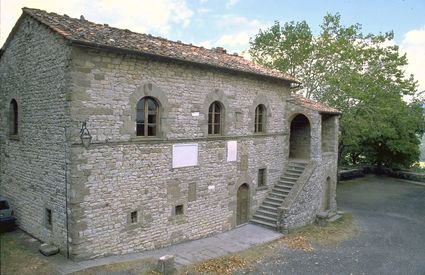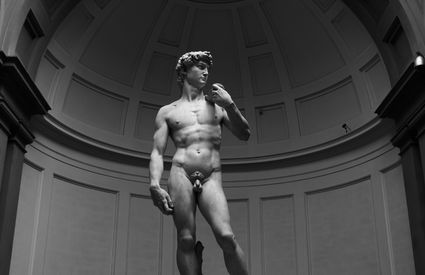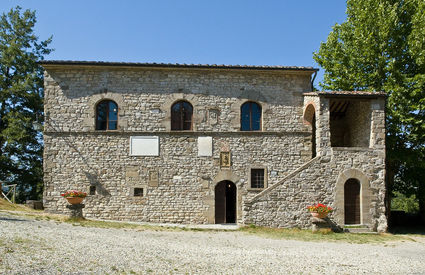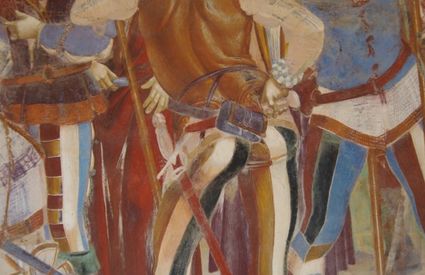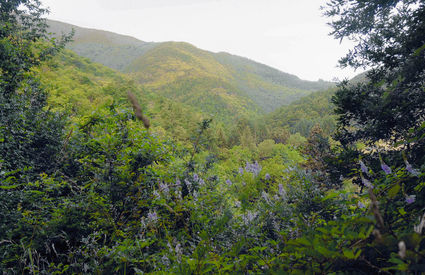Caprese Michelangelo
More than Michelangelo
A grandmother, a granddaughter, a sunset and the rustling of history in an old chimney
More than Michelangelo
A grandmother, a granddaughter, a sunset and the rustling of history in an old chimney
Where Michelangelo was born
At the window, the warm air of golden autumn came in, shaped by nature’s fiddling with the foliage in the woods. Inside the room, a fire burns slowly, lit more for its pleasant effects than for any real necessity. Next to it are two figures: the worn silhouette of an elderly woman and the sprightly shape of a young girl.
“Nonna, was Caprese really Michelangelo’s last name?”
“No,” replied the grandmother, smiling, “his last name was Buonarroti—actually, Buonarroti Simoni, to be exact. They weren’t from here, they were from Florence. Caprese was the name of this town before Michelangelo was added on in honor of the artist, who was born here.”
“Well, if they were from Florence, why was Michelangelo born in Caprese?”
“Because back in the time that the town was called Caprese—it was part of the Florentine state—the town couldn’t elect its own chief magistrate, so one of them would get sent into town from Florence once every six months. One of these was named Lodovico Buonarroti and it was during those six months that Francesca, his wife, gave birth to Michelangelo.”
“Was there a hospital in Caprese?”
“No, he was born in a house, just as
everyone was up until a few decades ago. The house still exists. It’s the former palazzo of the magistrate.
You’ve even seen it – it’s where the Museum is now.”
“But why was the house where Michelangelo was born standing, and the
walls of the castle in ruins?”
“Because those came afterwards. The castle had been destroyed by the bishop of
Arezzo, Guido Tarlati. In those
times bishops were also fighters and he had been excommunicated. It had to be a really beautiful castle. It’s said that
there, somewhere in it, you’ll find Totlia’s
tomb, buried in golden armor...”
Totila
“Who was Totila?” asked the child, looking inquisitively into her grandmother’s eyes.
“Totila was a king,” responded the grandmother, moving closer to the fireplace.
“He commanded the Goths, who had conquered Italy after the fall of the Roman Empire. It seems that a sorceress predicted that he would die above the coat of a goat…He laughed about it and then later forgot about it. The Byzantines back in those years wanted to conquer Italy and there was a long war. The final faceoff between Ravenna and Rome took place toward Gualdo Tadino, in Umbria. Totila was defeated and escaped toward Tuscany, but he was injured.
The Goths stopped to take care of him, as he was losing a lot of blood. Totila struggled to regain his strength. Some curious pastors took note and the king asked them: “What land are we in?” “We’re in Caprese,” they responded. Totila then picked up a tuft of grass from the ground and said, “Well, this must be the goat coat upon which I’m supposed to die.”
The grandmother continued, “The soldiers, being followed by Byzantines, buried their king in secret, with all of his golden armor. But no one really knows exactly where he is.”
“And now, little one,” she added, “it would be a good idea if we started preparing the table for Nonno’s return home.”
But the little girl would have none of this: she pulled on her grandmother’s clothes, begging for other stories.


